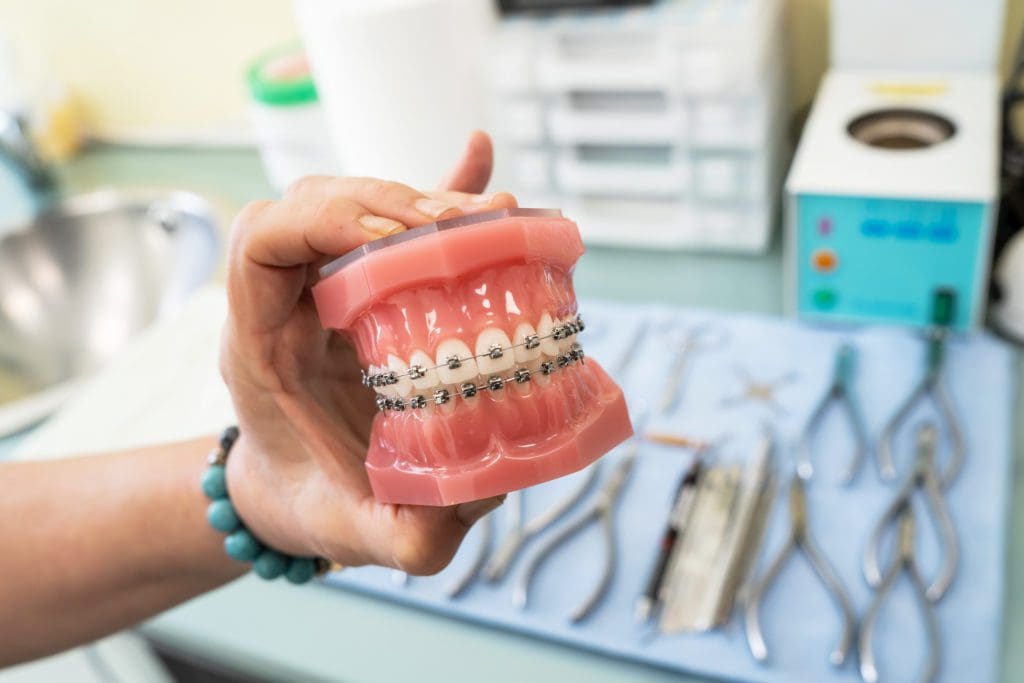Finding the Right Cumming Orthodontist for Your Braces and Aligners Requirements
Finding the Right Cumming Orthodontist for Your Braces and Aligners Requirements
Blog Article
Comprehensive Overview to Orthodontics Treatments for Dealing With Oral Imbalances
In the world of orthodontics, the trip to achieving a perfectly aligned smile includes a myriad of treatments customized to fix dental misalignments. From conventional dental braces to invisible aligners and also medical options, the area of orthodontics offers a variety of remedies to resolve differing levels of oral abnormalities. Comprehending the complexities of each procedure, including their devices, benefits, and potential downsides, is important in making notified decisions concerning one's orthodontic therapy. As we navigate via the thorough overview to orthodontic treatments for fixing oral misalignments, the elaborate information of each approach will unravel, losing light on the course towards a useful and harmonious dental positioning.
Orthodontic Procedures Overview

Along with traditional dental braces and clear aligners, orthodontists might additionally suggest various other interventions like headgear, palatal expanders, or retainers to deal with certain alignment problems (orthodontics). These procedures are tailored to every person's unique needs and might involve a mix of therapies to achieve the wanted outcomes. Normal modifications and surveillance are vital parts of orthodontic treatment to ensure progress gets on track and to make any type of needed modifications in the process. By undertaking orthodontic procedures, individuals can not only attain a straighter smile however likewise improve their general oral health and wellness and function.
Typical Dental Braces: Just How They Function
When thinking about orthodontic treatments for oral imbalances, conventional braces stand apart as a time-tested method for remedying teeth placing. Typical dental braces include braces, cables, and bands that function together to apply continuous stress on the teeth, slowly moving them right into the wanted alignment. The braces are affixed to the teeth utilizing a special adhesive, and the wires are threaded with the brackets. By readjusting the tension of the cords, orthodontists can manage the direction and force related to each tooth, leading them into proper positioning with time.
As pressure is used to the teeth via the braces, the bone surrounding the teeth is improved to support the brand-new tooth settings. Individuals will certainly need routine changes at the orthodontist's office to guarantee the dental braces continue to use the right stress for effective teeth movement.
Unnoticeable Aligners: Pros and Disadvantages
These clear, tailor-made trays are basically unseen when used, making them an attractive choice for people looking for a more cosmetically pleasing orthodontic treatment. Patients can get rid of the aligners prior to consuming or brushing their teeth, decreasing the threat of food getting stuck in the appliance and simplifying the cleaning procedure.

Surgical Orthodontic Options
Surgical treatments in orthodontics existing viable options for dealing with intricate dental misalignments that may not be effectively dealt with with traditional orthodontic treatments. While unseen aligners and conventional braces can fix lots of orthodontic concerns, specific situations need medical intervention to achieve ideal results. Surgical orthodontic options are commonly advised for severe malocclusions, significant jaw discrepancies, and situations where the underlying bone framework requires modification to accomplish proper positioning.
One typical surgical orthodontic treatment is orthognathic surgery, which entails rearranging the jaws to deal with functional problems such as problem talking or eating. This surgery is often done in collaboration with an orthodontist that assists straighten the teeth prior to and after the procedure. Surgical orthodontics might also involve treatments to subject affected teeth, eliminate excess gum cells, or improve the jawbone to develop a more unified face profile.
Prior to considering surgical orthodontic choices, people go through an extensive analysis to identify the necessity and possible benefits of such treatments. cumming aligners. While surgical procedure might appear complicated, it can significantly enhance both the feature and looks of the smile in situations where traditional orthodontic therapies fail
Retainers and Post-Treatment Care

Post-treatment care involves adhering to the orthodontist's guidelines vigilantly. This might consist of appropriate oral hygiene techniques, participating in follow-up visits, and putting on the retainers as prescribed. Failure to follow post-treatment care instructions can result in relapse, where the teeth gradually return towards their original settings. Consistent retainer wear, excellent dental hygiene, and routine oral exams are important for maintaining the outcomes achieved via orthodontic surgical procedure and making certain the lasting security of the fixed dental positioning.
Verdict
In conclusion, orthodontic treatments supply various alternatives for fixing dental misalignments. Surgical orthodontic options are offered for much more serious imbalances. Generally, orthodontic procedures can efficiently boost oral wellness and aesthetic appearance.
As we browse with the thorough overview to orthodontic procedures for dealing with dental imbalances, the detailed information of each method will certainly unfold, losing light on the path toward a harmonious and useful dental alignment. - invisalign
One of the most typical orthodontic therapies is the usage of dental braces, which consist of metal braces and wires that use gentle pressure to slowly shift teeth right into the preferred setting.When thinking about orthodontic treatments for oral imbalances, conventional dental braces stand out as a time-tested approach for fixing teeth positioning. page In addition, undetectable aligners might not be ideal for complicated orthodontic concerns that require even more considerable teeth movement, as they are usually suggested for mild to modest situations. Retainers are custom-made orthodontic devices created to hold teeth in their fixed positions after the completion of orthodontic treatment.
Report this page